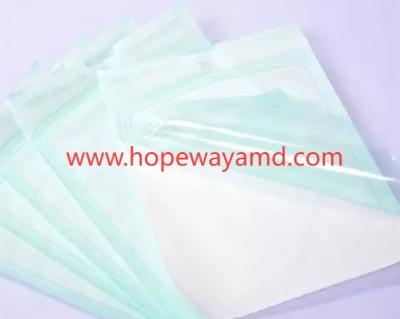-
In many controlled environments, consistent handling and sealing methods shape the pace of daily routines, and the Heat Sealing Sterilization Pouch from Hopeway AMD offers a structured approach for teams seeking predictable preparation steps. Its design supports tasks that require careful organization, steady sealing, and dependable transitions without increasing complexity during busy periods.
Across clinics, labs, and instrument processing areas, a stable sealing method helps maintain a continuous flow. Workers must often navigate between cleaning areas, sealing stations, and storage shelves, balancing precision with time-sensitive tasks. A pouch format that aligns with natural handling patterns can reduce distractions and allow staff to maintain attention on the instruments rather than the packaging itself.
Material behavior plays a significant role in comfort and efficiency. When a pouch stays flat during loading, responds predictably under heat, and avoids curling or shifting, workers can follow each step with fewer interruptions. This steadiness supports a smooth rhythm across repetitive tasks, helping reduce fatigue that often stems from constant adjustments or inconsistent responses from the material.
Visibility in sterile preparation is equally important. Clear layers allow quick confirmation of contents before sealing, supporting confidence during multi-stage processes. A pouch that maintains clarity, even after handling, helps minimize repeated checks and supports more efficient pacing. This contributes to a calmer workflow, especially in settings where accuracy and timing must align.
Durability under routine stress is another key factor. A pouch that withstands bending, pressure, and repeated handling can become a reliable part of the daily sequence. Workers can move from sealing to storage without concern for unexpected flaws, creating a more predictable environment. Stability in packaging materials helps maintain focus during high-volume periods and supports consistent results across teams.
Storage and organization also influence workflow quality. A pouch format that stacks neatly, remains orderly, and supports quick access helps keep prep tables and carts streamlined. When supplies stay tidy, workers spend less time organizing and more time completing core tasks. Over time, these small efficiencies contribute to clearer coordination between departments and more harmonious patterns of work.
Training becomes more efficient when materials behave consistently. New staff can learn procedures more quickly when sealing responses, handling characteristics, and preparation steps follow a stable pattern. This consistency supports unified results across shifts and improves communication between workers who depend on shared standards.
As facilities refine their sterile handling processes, each element of the workflow contributes to the overall rhythm. Packaging materials that align with movement, timing, and clarity allow teams to build routines that feel natural and balanced. When every tool supports the flow instead of interrupting it, the daily environment becomes more manageable and more stable.
If you would like to approach sterile preparation from a fresh angle, there is a quiet yet intriguing path waiting ahead. Step toward a new perspective by visiting https://www.hopewayamd.com/news/industry-news/heat-sealing-sterilization-pouch-essential-for-sterile-instrument-management.html , where each page opens like a subtle invitation to explore possibilities shaped for thoughtful workflows.
